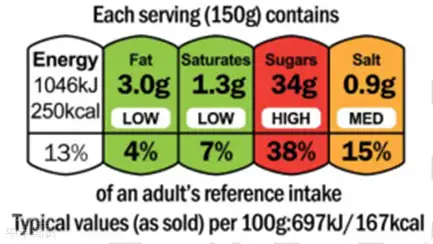- Shanghai Zhongshen International Trade Co., Ltd. - Two decades of trade agency expertise.
- Service Hotline: 139 1787 2118
With the increasing global awareness of health and nutrition, the nutritional information of food has become an important reference for consumers when making purchases. Recently, the Consumer Affairs Agency of Japan held a seminar on the feasibility of the Front-of-Pack (FOP) nutrition information labeling system for food packaging. It is expected that by March 2024, Japan may make a clear statement on this policy direction. So, what impact will this change have on food label markings, and how will it change consumers food choices?
I. The meaning and advantages of the FOP system
FOP, namely the Front-of-Pack labeling system, aims to display key nutritional information on the front of food packaging in an intuitive way such as through graphics. Compared with the traditional nutrition facts table, FOP is more concise and clear, helping consumers quickly identify the nutritional value of food. This approach can greatly enhance consumers ability to choose food and contribute to the formation of healthier eating habits.
II. The current nutritional labeling requirements and deficiencies in Japan
At present, the Food Labeling Standards in Japan require that five basic nutritional information items must be labeled on the packaging of processed foods. However, these information are usually located on the back of the packaging and are not easily noticed by consumers. In addition, most foods are labeled in the way of per 100 grams/ml, increasing the burden of consumers understanding. At the same time, the lack of Nutrient Reference Values labeling in Japanese food labels is not conducive to consumers comprehensive understanding of food nutrition.
III. International FOP labeling requirements
Globally, many countries have implemented a front-of-pack nutrition labeling system similar to FOP. For example, Frances voluntary labeling system comprehensively evaluates the nutritional components of food through five grades from A to E. The traffic light labeling method in the UK uses red, yellow, and green graphics to represent the content of each nutrient in food and its proportion of the daily reference intake. These labeling methods are intuitive and easy to understand, helping consumers make healthier food choices.

IV. The upcoming changes in food label markings in Japan
The seminar held by the Consumer Affairs Agency of Japan indicates that Japan may implement the FOP labeling system in the near future, which will be a major change in food label markings in Japan. This will not only affect domestic food manufacturers in Japan but also international food producers exporting to Japan. Therefore, food enterprises exporting to Japan need to closely monitor the latest policy developments regarding FOP in Japan in order to adjust product labels in a timely manner to ensure compliance with the new labeling requirements.
V. The impact of the FOP system on consumers
The implementation of the FOP system will have a profound impact on consumers. First, by intuitively displaying the nutritional information of food on the front of food packaging, consumers can more conveniently understand the nutritional value of food and thus better choose food suitable for themselves. Second, the FOP system can increase consumers trust in food labels because consumers can more accurately understand the nutritional components and content of food. This will help raise consumers health awareness and prompt food manufacturers to pay more attention to the nutrition and health aspects of their products.
VI. Challenges and opportunities for food manufacturers
The implementation of the FOP system will bring certain challenges to food manufacturers. In order to meet the FOP labeling requirements, enterprises need to update label designs, adjust formulas, and make adjustments to relevant production and quality control processes. In addition, to ensure the accuracy and reliability of labels, enterprises also need to strengthen the quality control of raw materials and the production process. However, if enterprises can successfully adapt to and comply with the FOP system, they will have the opportunity to gain more market share and consumer recognition. At the same time, by providing more accurate and intuitive nutritional information on food packaging, the brand image and market competitiveness of products can be improved.
VII. Future trends and developments
With the continuous increase of global health awareness, the FOP system will be promoted and applied in more and more countries and regions. In the future, we can expect to see more intuitive and easy-to-understand nutrition labels on food packaging, helping consumers better understand the nutritional value of food. At the same time, with the development of technology, food labels will also have more interactive and intelligent functions, such as obtaining more detailed food information and health advice by scanning QR codes.
In conclusion, the implementation of the FOP system will have a profound impact on food label markings, providing consumers with more accurate and intuitive food nutrition information and helping food manufacturers improve product quality and market competitiveness. For food enterprises exporting to Japan, closely monitoring the latest policy developments regarding FOP in Japan and adjusting product labels accordingly will be the key to ensuring compliance and market competitiveness.
Related Recommendations
Contact Form
Category case
Contact Us
Email: service@sh-zhongshen.com
Related Recommendations
Contact via WeChat

? 2025. All Rights Reserved. 滬ICP備2023007705號-2  PSB Record: Shanghai No.31011502009912
PSB Record: Shanghai No.31011502009912









